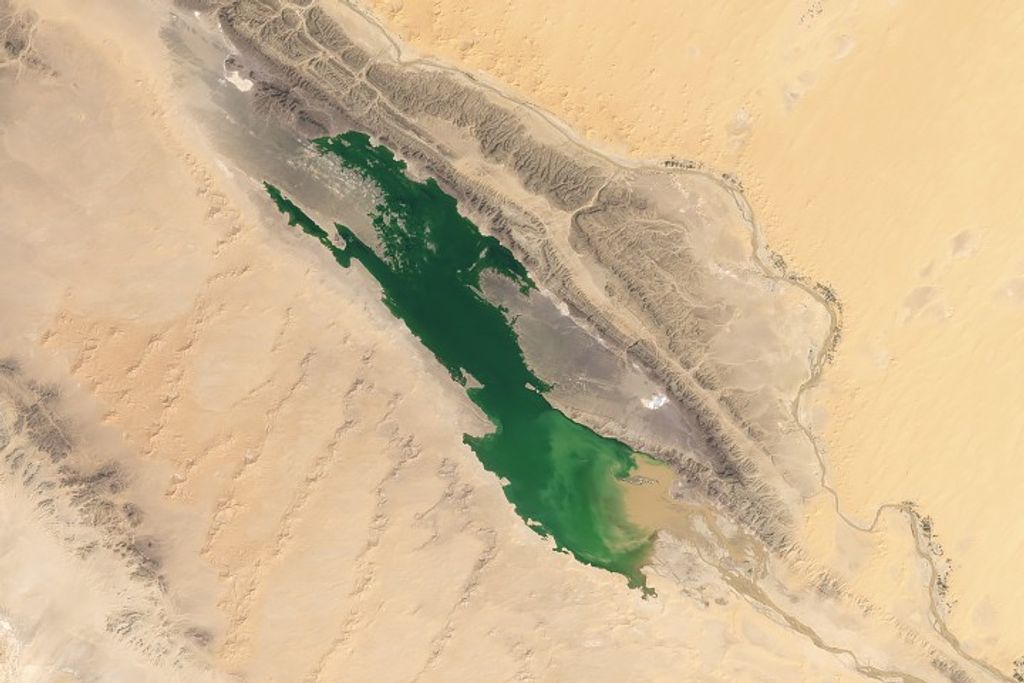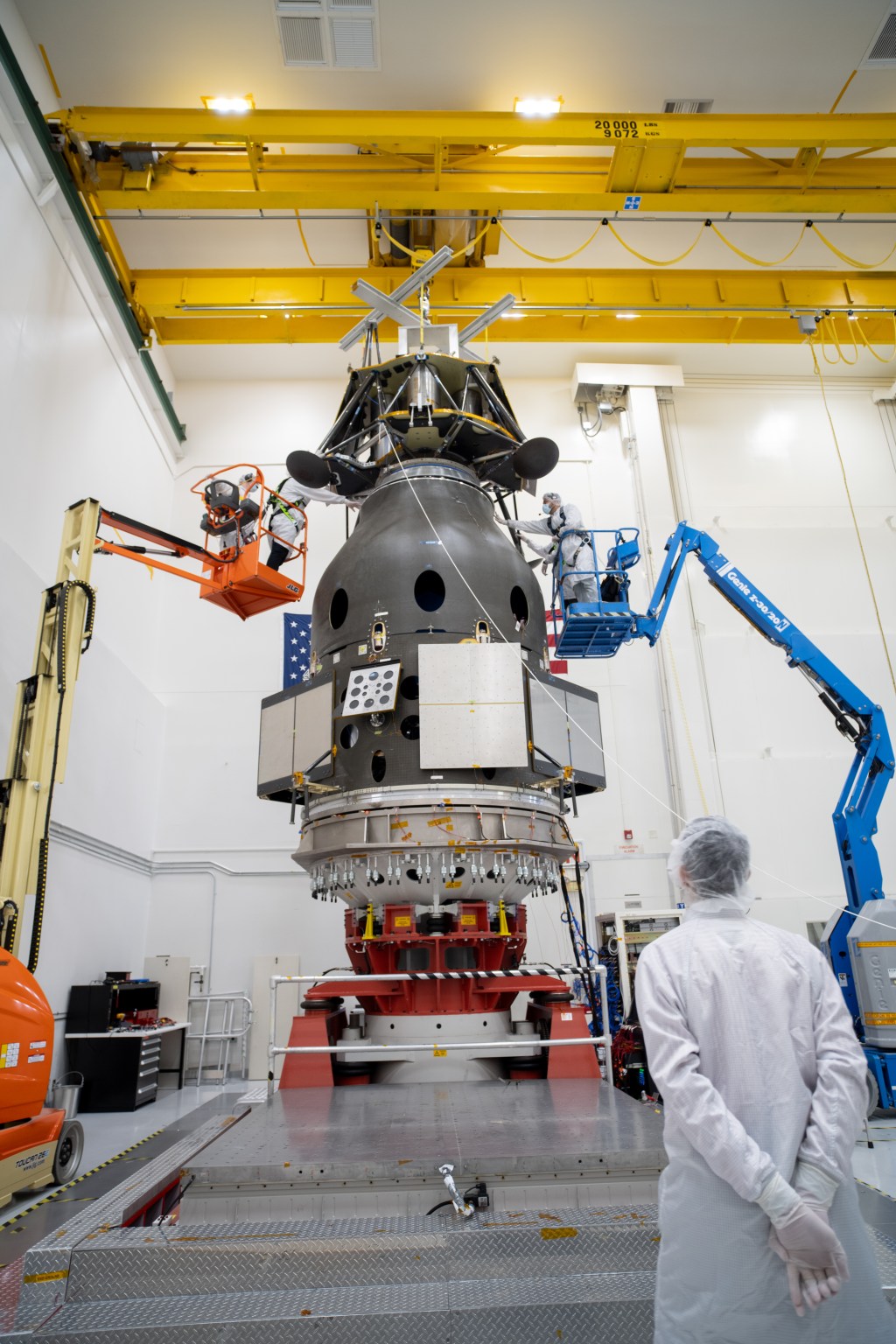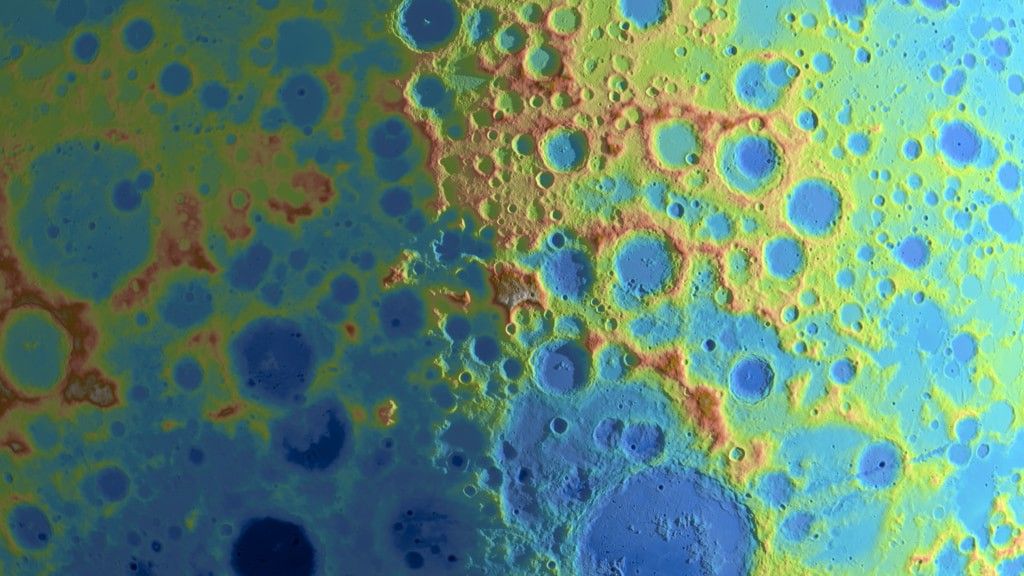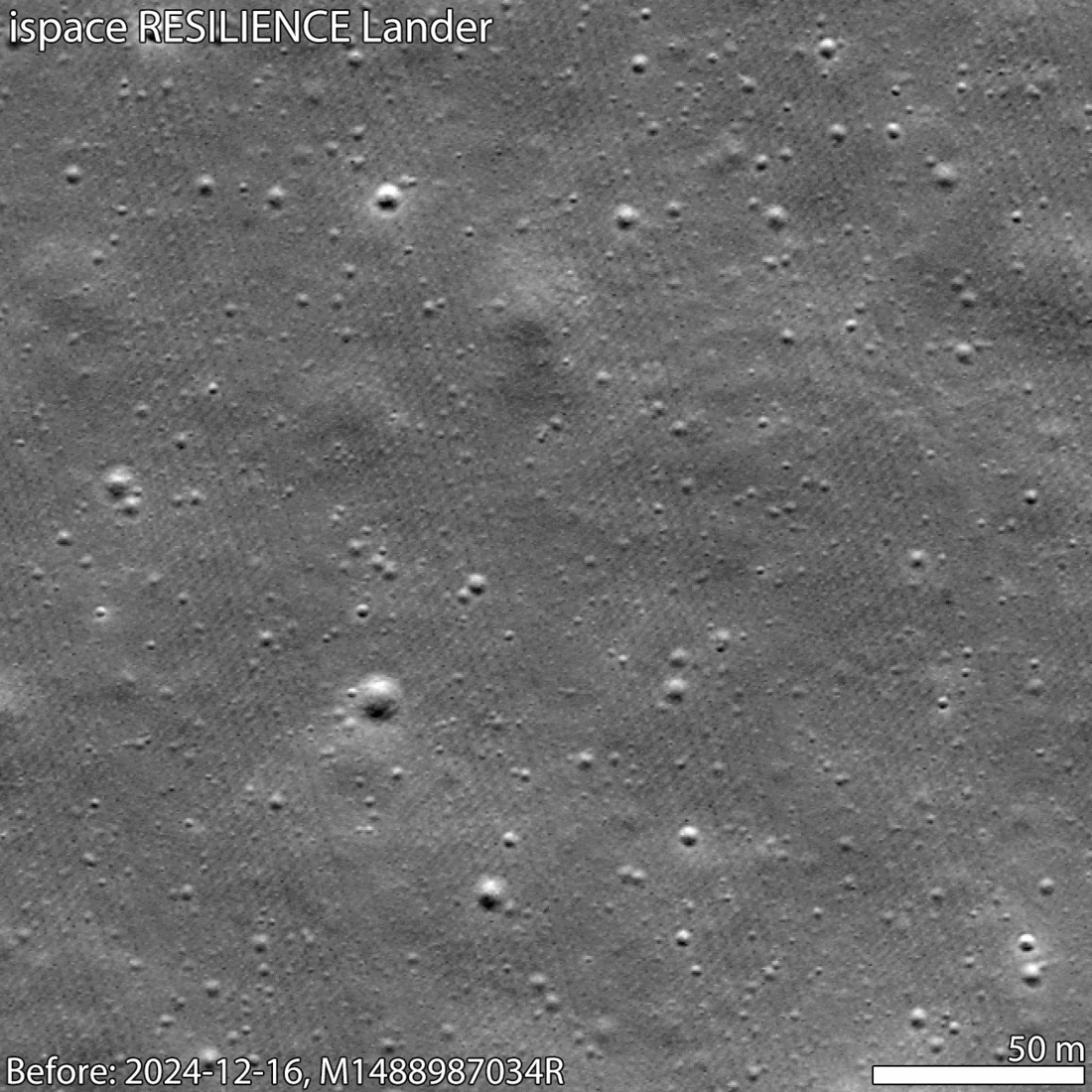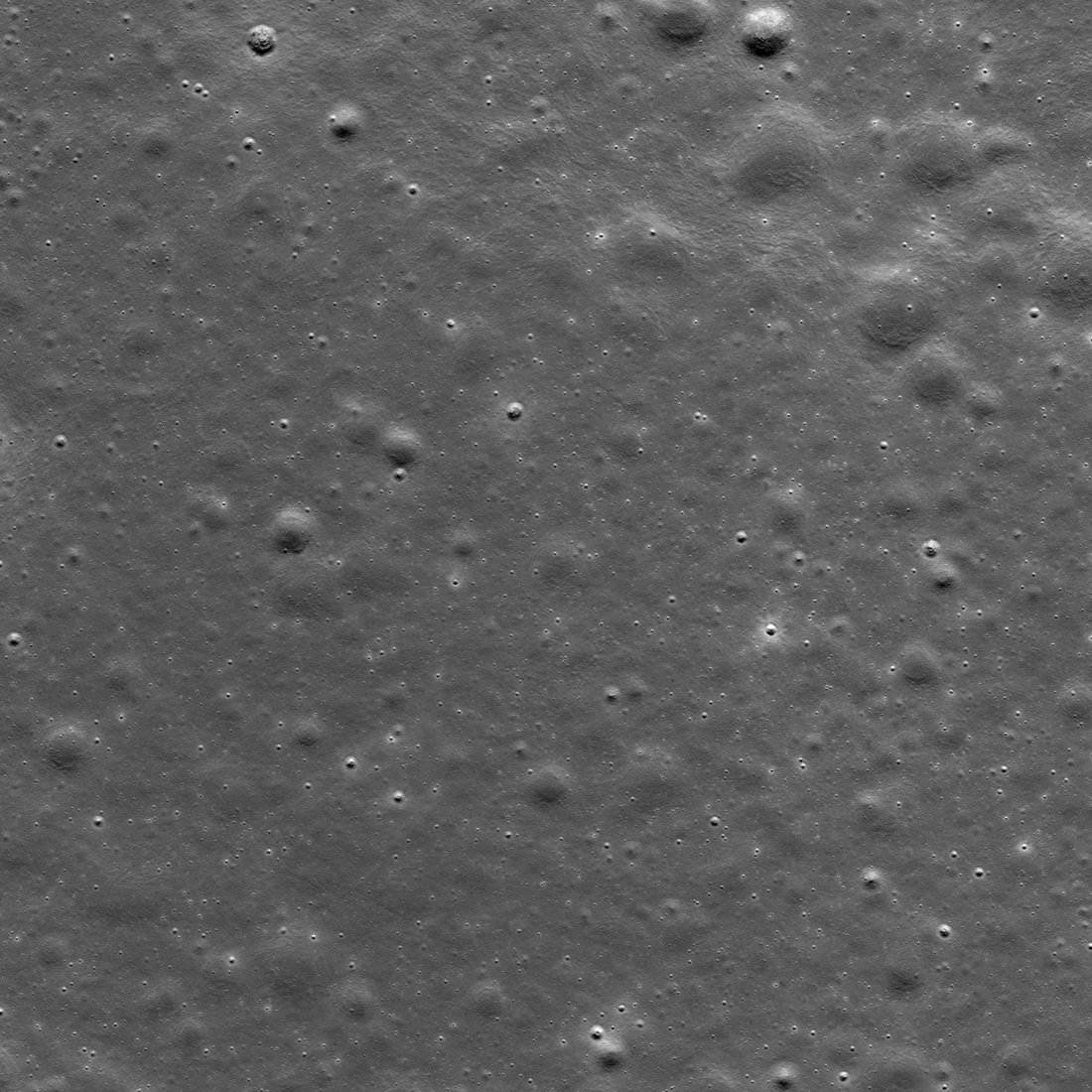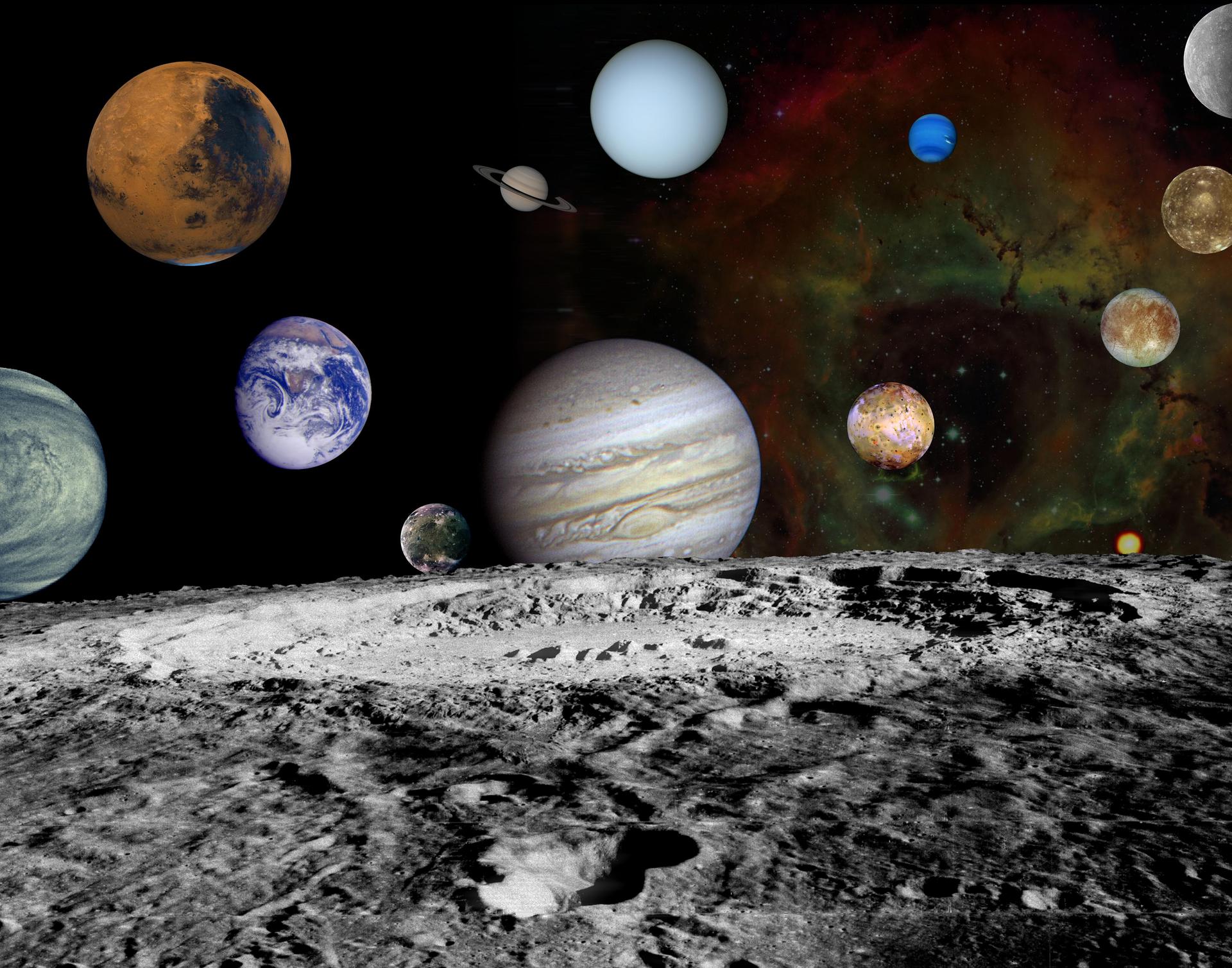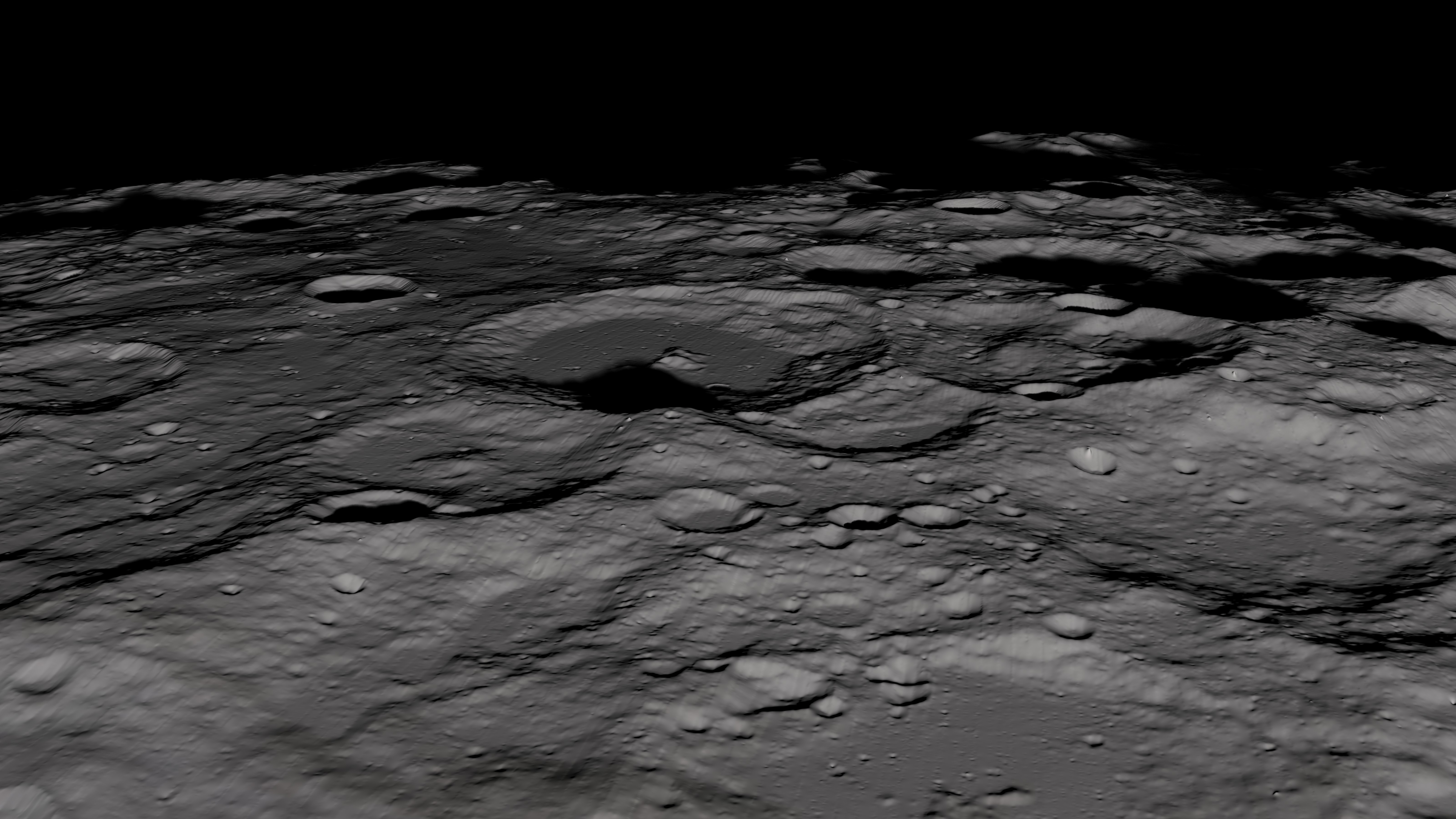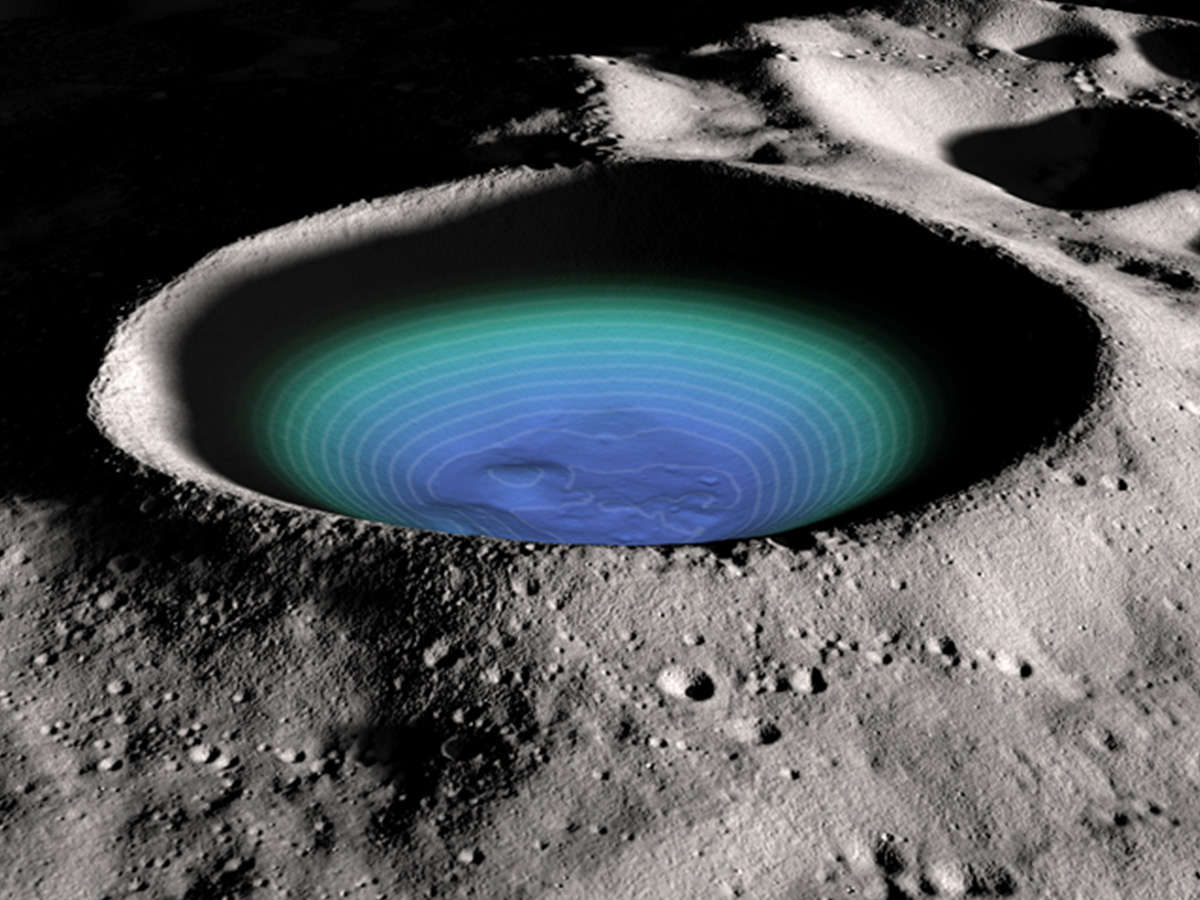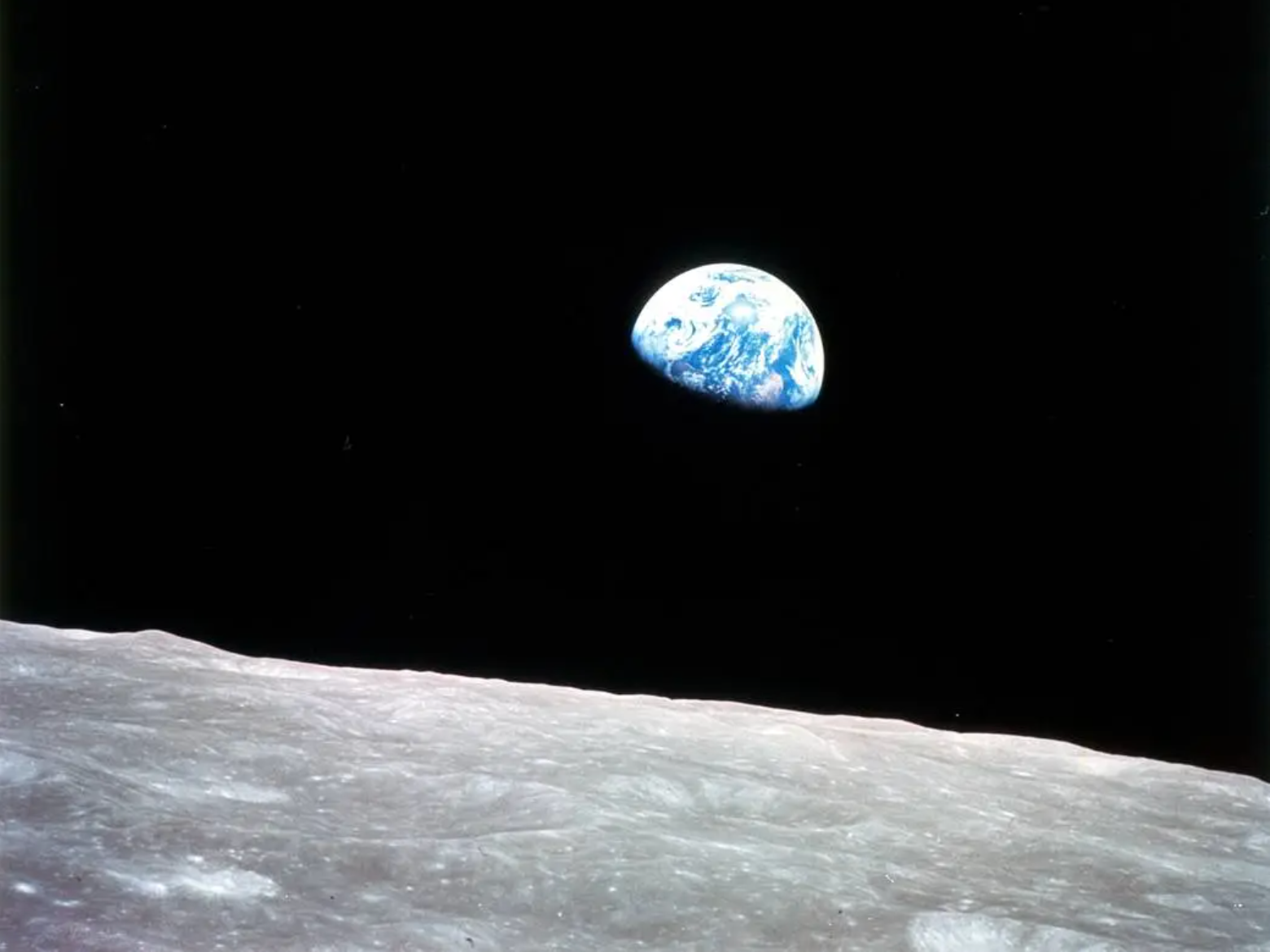Lunar Reconnaissance Orbiter
NASA's LRO (Lunar Reconnaissance Orbiter) is paving the way for human and robotic exploration of the Moon.
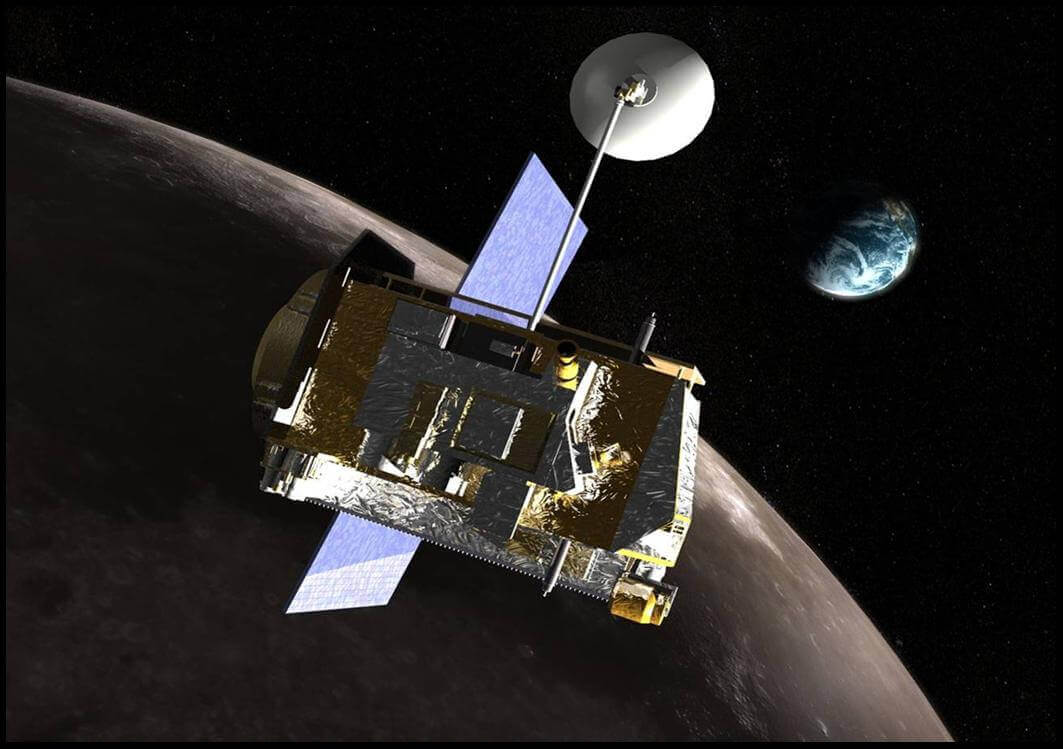
Light and Shadow Near the Moon's South Pole
The pattern of low-angle sunlight and shadows near the Moon's poles is unlike anywhere else on the lunar surface — or on Earth. This visualization, created using LRO data, shows the movement of shadows near the Lunar South Pole over the course of two lunar days (approximately two Earth months).
Learn MoreNov 16, 2022
Mapping the Moon in Three Dimensions
One of LRO's seven science instruments, LOLA (the Lunar Orbiter Laser Altimeter), measures the Moon's elevation profile. This color-coded image is based on LOLA data gathered near the Moon's South Pole. Red coloring indicates high-altitude parts of the landscape, and blue indicates lower-altitude areas. Credit: NASA's Scientific Visualization Studio
Learn More







